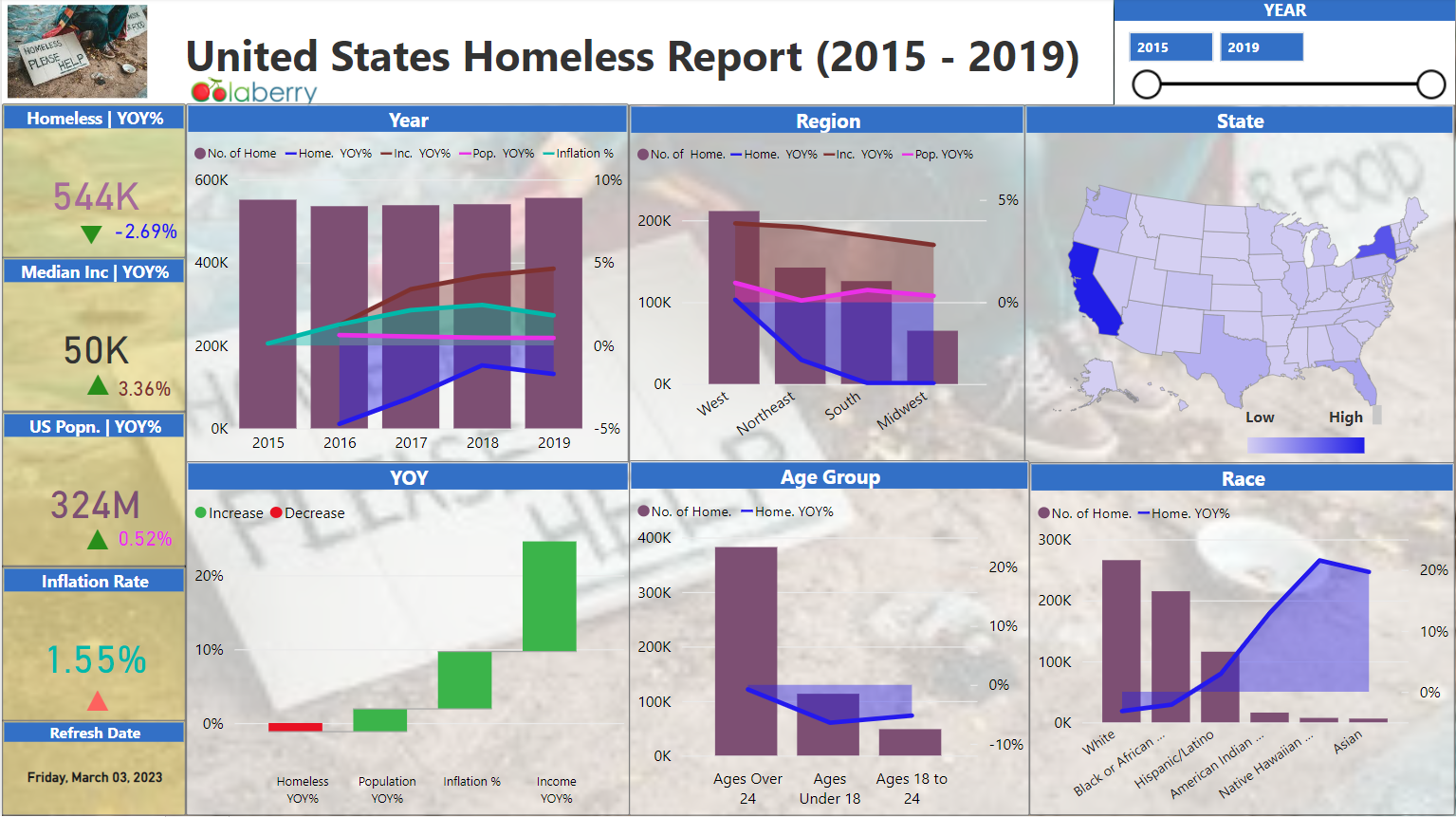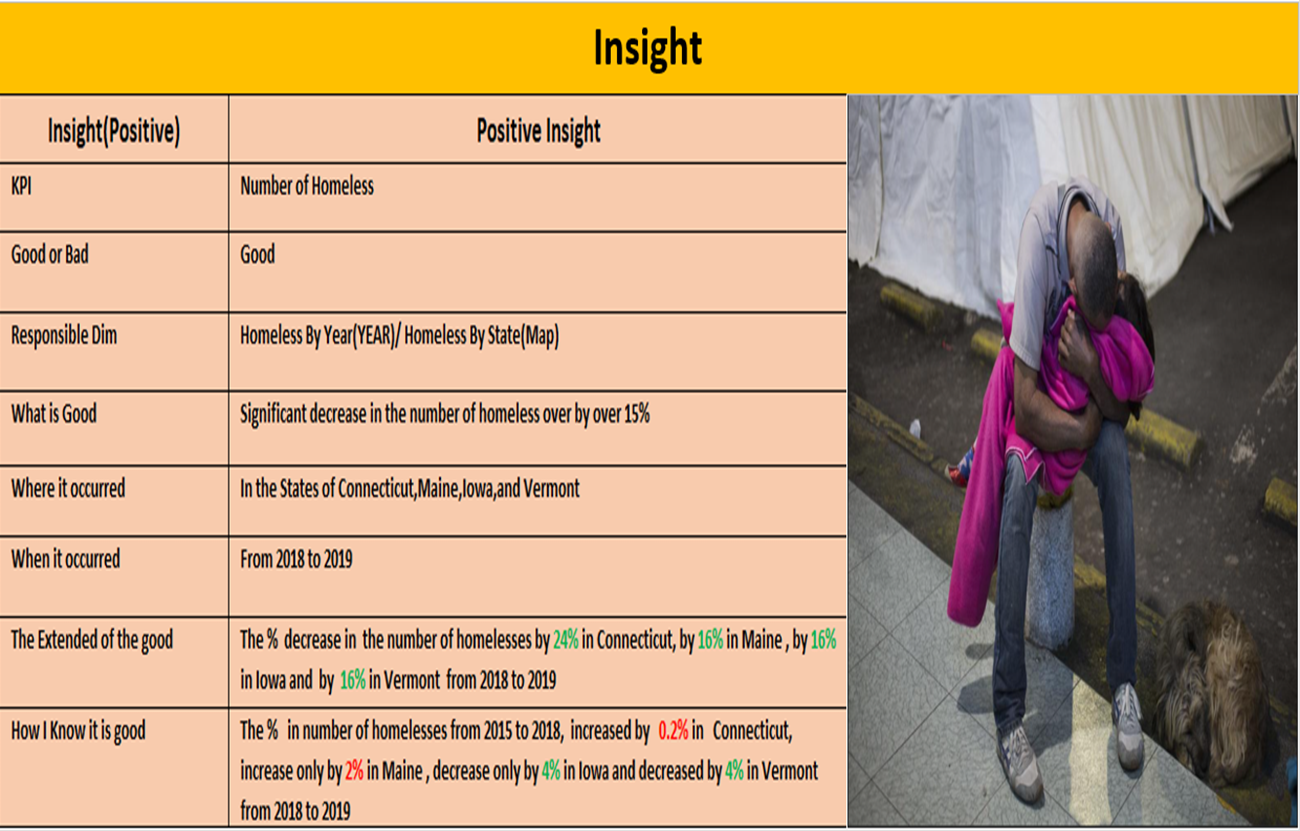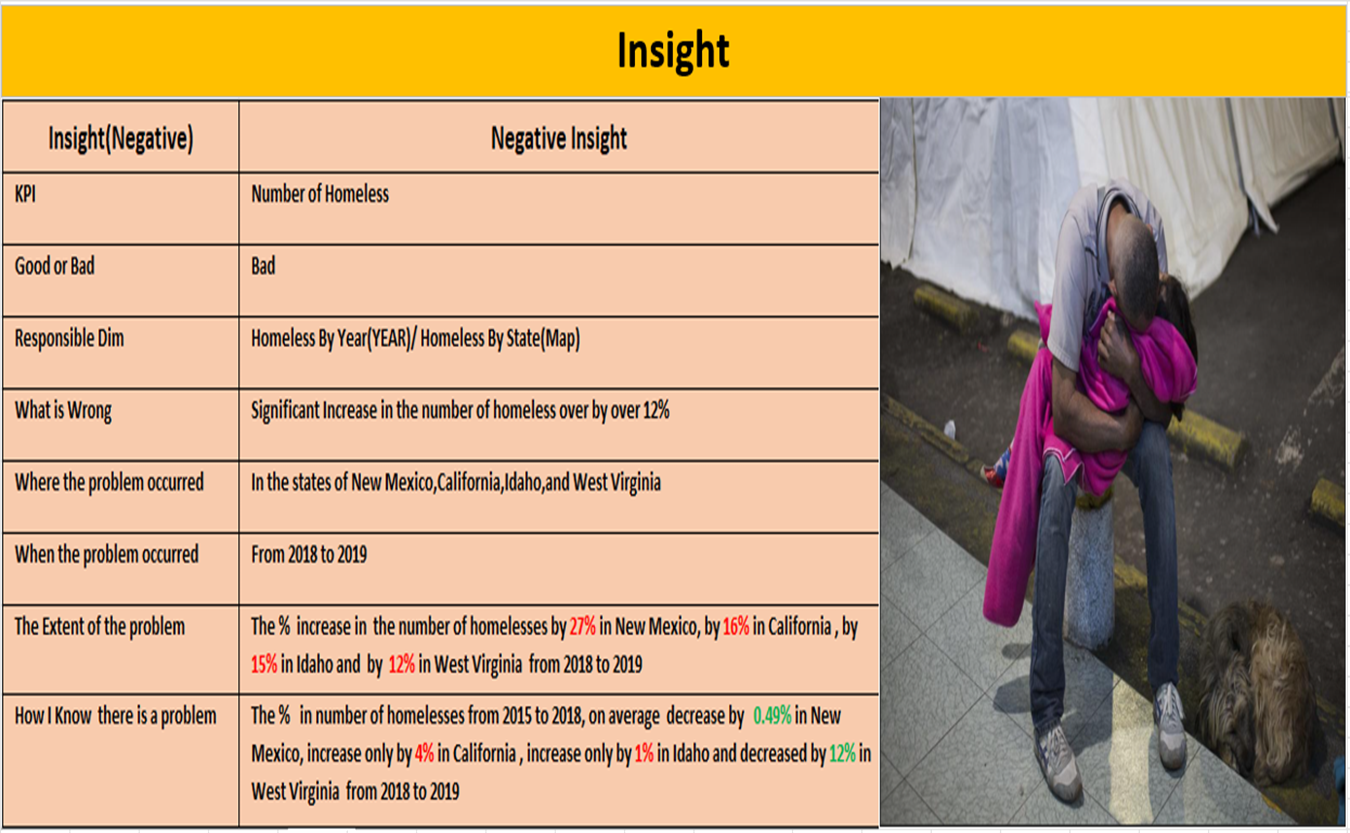Completion Date:
Project Overview
American Homelessness is getting into a crisis in the past few years. We see more homeless sleeping in the parks and other public places. According to the most recent point-in-time data from the US Department of Housing and Urban Development, as of December 2019, 556,000 people were experiencing homelessness, an increase nearly by 15,000 from 2018. According to the Joint Center for Housing Studies of Harvard University, the 2018-2019 number of homeless increases did not happen uniformly. The number of people experiencing homelessness increased by more than 10% in six states but decreased by over 10% in nine states. Today, the housing crisis exists because of a number of factors, namely, the lack of affordable housing as the Salary to own home increases in most metropolitan areas. Other factors can include illness and disability, living in poverty, mental illness, substance abuse and unemployment due to personal hardship.
This project will help to breakdown the increase/decrease of Homeless in the United States from 2015 to 2019 by state, by year, by region, by age group, and by ethnicity (race). It also helps to analyze whether the changes in rates in Population, median income, and inflation in the United States between 2015 to 2019 have any effect on the increase/decrease of homelessness during the specified time period, and which areas to focus on in order to decrease the growth of homelessness in the country.
Role:
Problem Statement
The increase in homeless people implies that more people don’t know where they are sleeping every night, what they are going to eat, have clean water, and don\\\'t have a good health care. The increase of the number of homeless also increases the crime rate in those areas. study conducted by Columbia University estimates that the population of people experiencing homelessness increased by 40 – 45% nationwide following the COVID-19 pandemic. An examination of 20 US urban areas also found the number of deaths of Homeless people shot up by 77% in the five years ending in 2020.
Next Steps
Solve the affordable housing crisis: The data indicates that there were significant increases in the number of Homeless from 2018 to 2019 in the states of New Mexico by 27%, California by 16%, Idaho by 15%, and Virginia by 12%. However, the data also shows no significant changes in Income (increased by 6% in New Mexico, by 6% in California, by 6% in Idaho, and by 4% in West Virginia), in Population (increased by 0.28% in New Mexico, by 0% in California, by 2% in Idaho, and decreased by -0.59% in West Virginia), and there was no significant change in US inflation, which increased only by 3% during that period. This implies that inflation, population or income did not have significant effect on the number of Homeless between states. According to the Joint Center for Housing Studies of Harvard University, the metropolitan areas with the largest increases in 2019, all have particularly high-cost burdens and scarce affordable housing. Therefore, to solve the issue of these significant increases in number of homeless, I suggest the housing services need to address this lack of affordable housing by making housing affordable to most people, providing assistance to rent and moving costs.
Education: Based on to the data on the report, from the 5 years average of 544K homeless in the US, 113K (21%) were ages under 18. Completing high school is a contributing factor in whether youth will suffer from homelessness at some point in their lives. According to U.S. Interagency Council on Homelessness, children and youth who don’t earn a high school diploma are 346% more likely to experience homelessness than those with a diploma. I suggest a school-based support for children who are living without a consistent home can help them develop the skills needed to become stable and independent and rise out of homelessness. I also suggest state and federal grants fund programs that evaluate students’ needs and provide them with free education, transportation, immunization, proper enrollment, assistance with attendance, residency and proper guardianship.
Assistance to the Veterans: Based on to the data on the report, from 5-year average of 544K homeless in the US, 388K (70%) were over the age of 24. According to the U.S. Department of Housing and Urban Development (HUD)
40,056 veterans are homeless on any given night and nearly 13% of the homeless adult population are veterans. Veterans face a set of unique challenges when transitioning back into civilian life. The lack of affordable housing, unemployment and PTSD are all contributing factors, just to name a few. Veterans who struggle with homelessness often suffer from more than just living without a roof over their heads. Many experiences recurring disorders and PTSD and finding stability through housing addresses many of the obstacles veterans face to find treatment and live with stability. To decrease the number of veteran homelessness I suggest the following:
Offer permanent housing to as many Veterans and chronically homeless individuals as possible on a community level.
A health care network of outpatient clinics, vet centers and VA hospitals for veterans.
Assist Veterans with technical skills and job placements, educational programs to be a productive part of society.
Deployment






